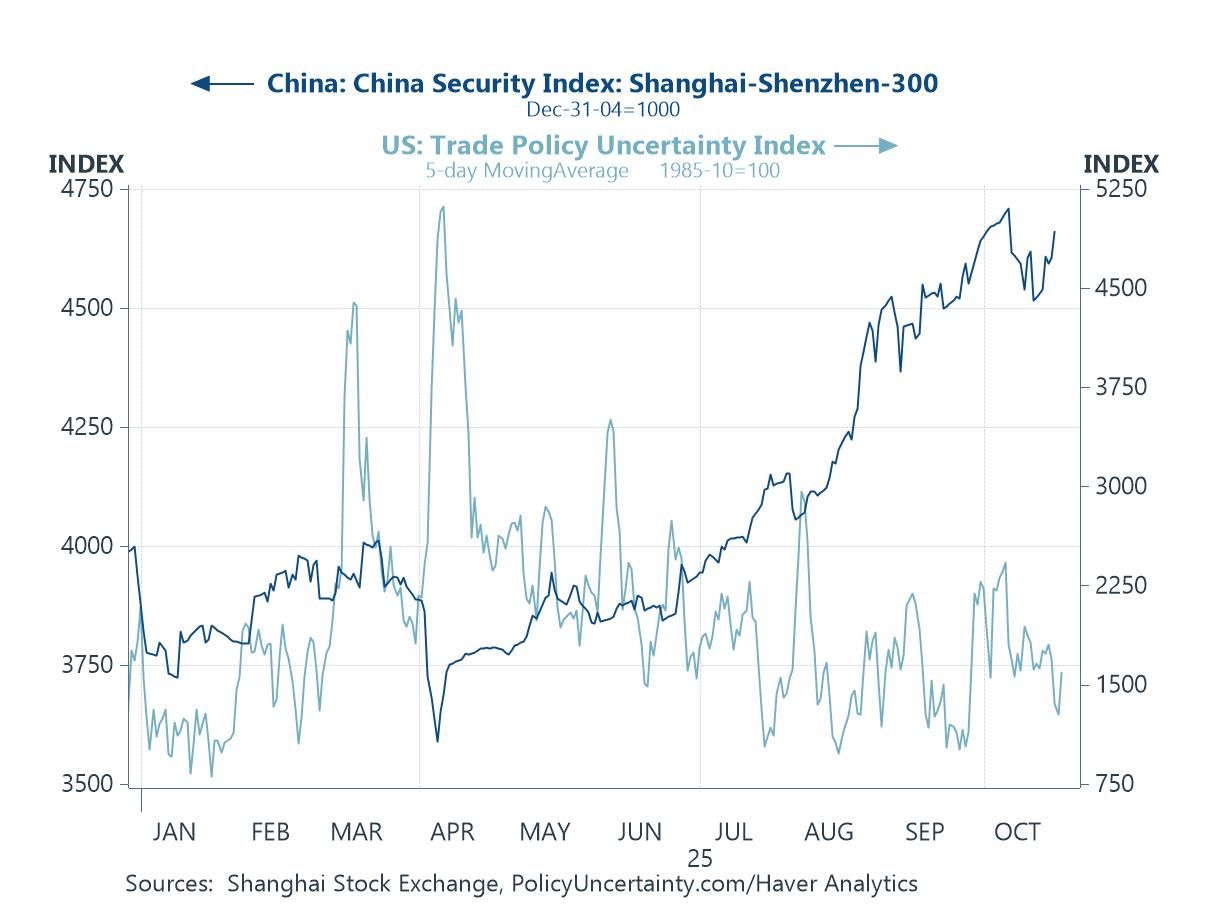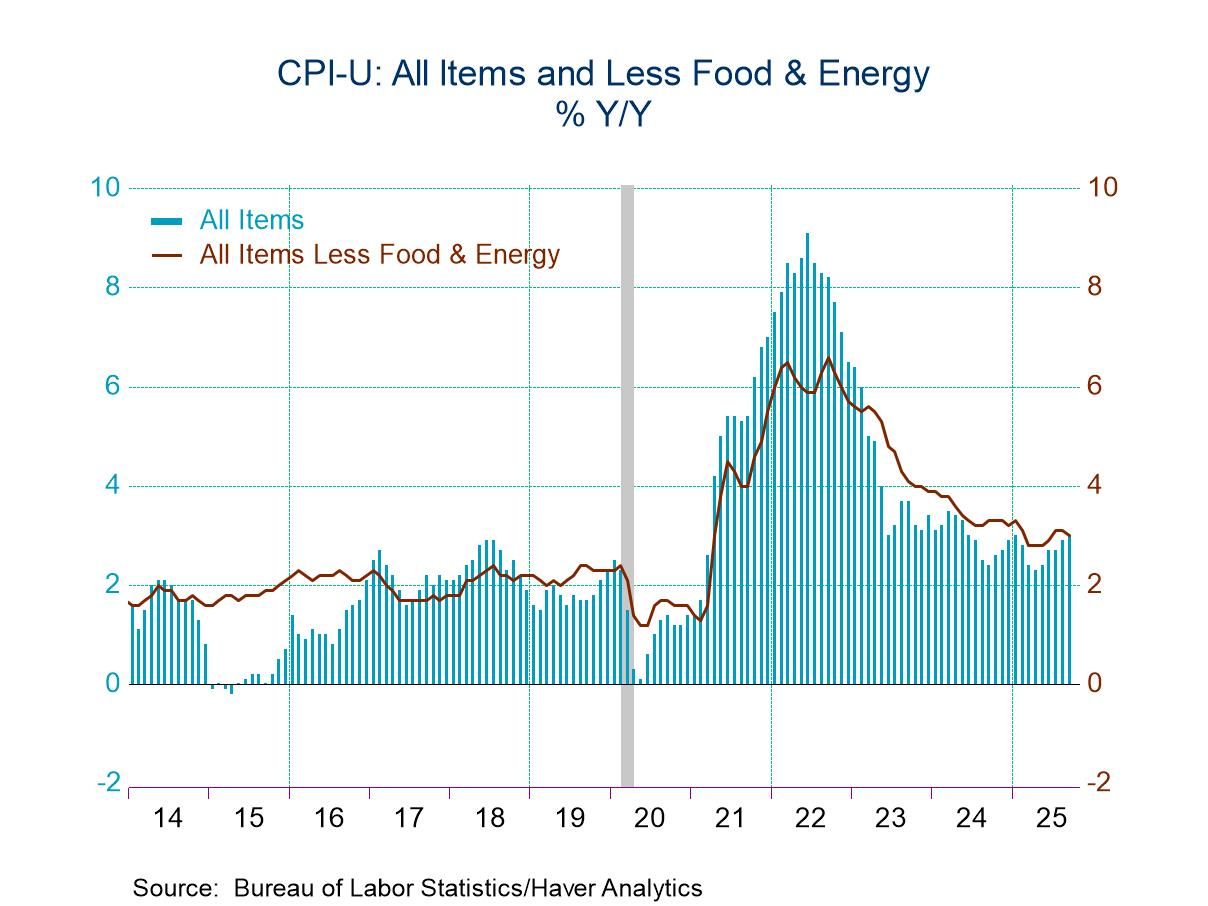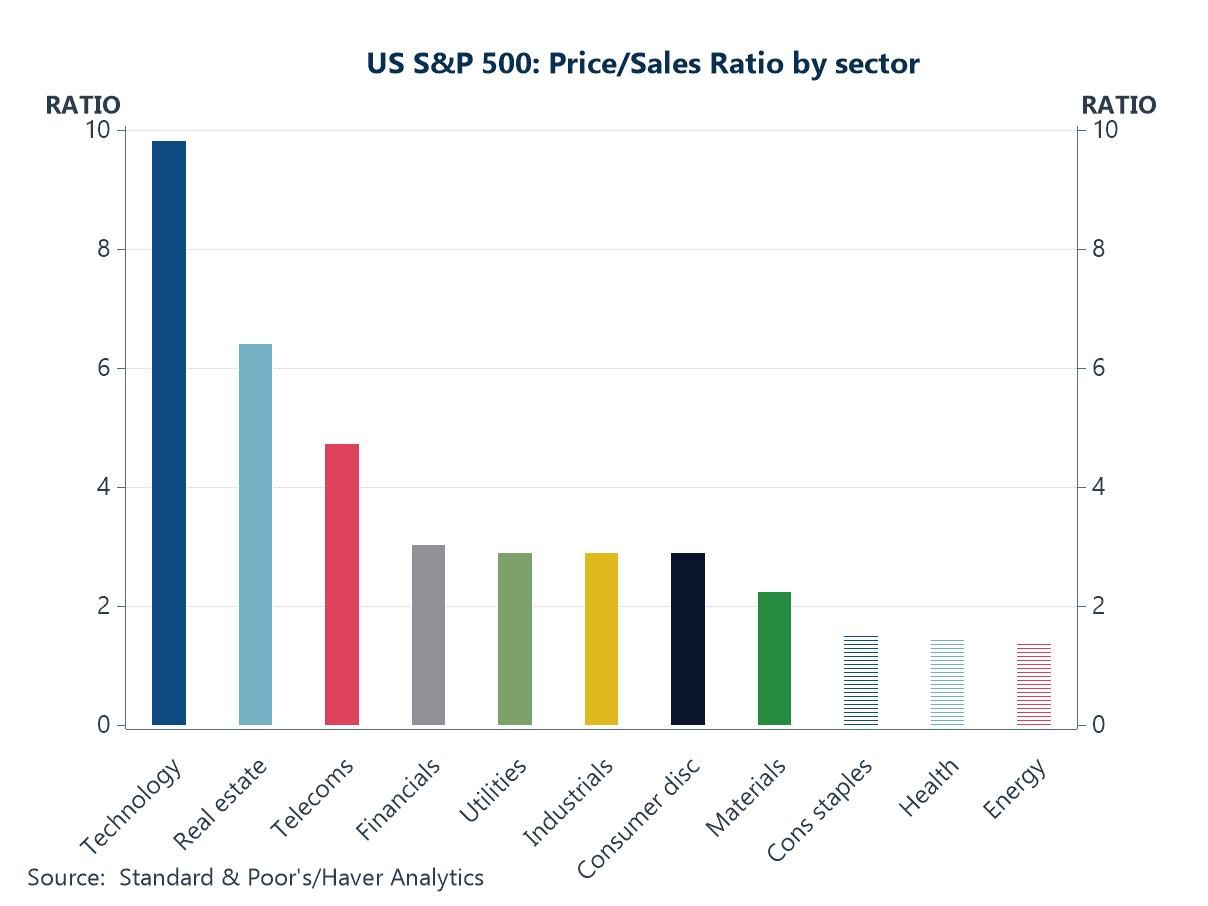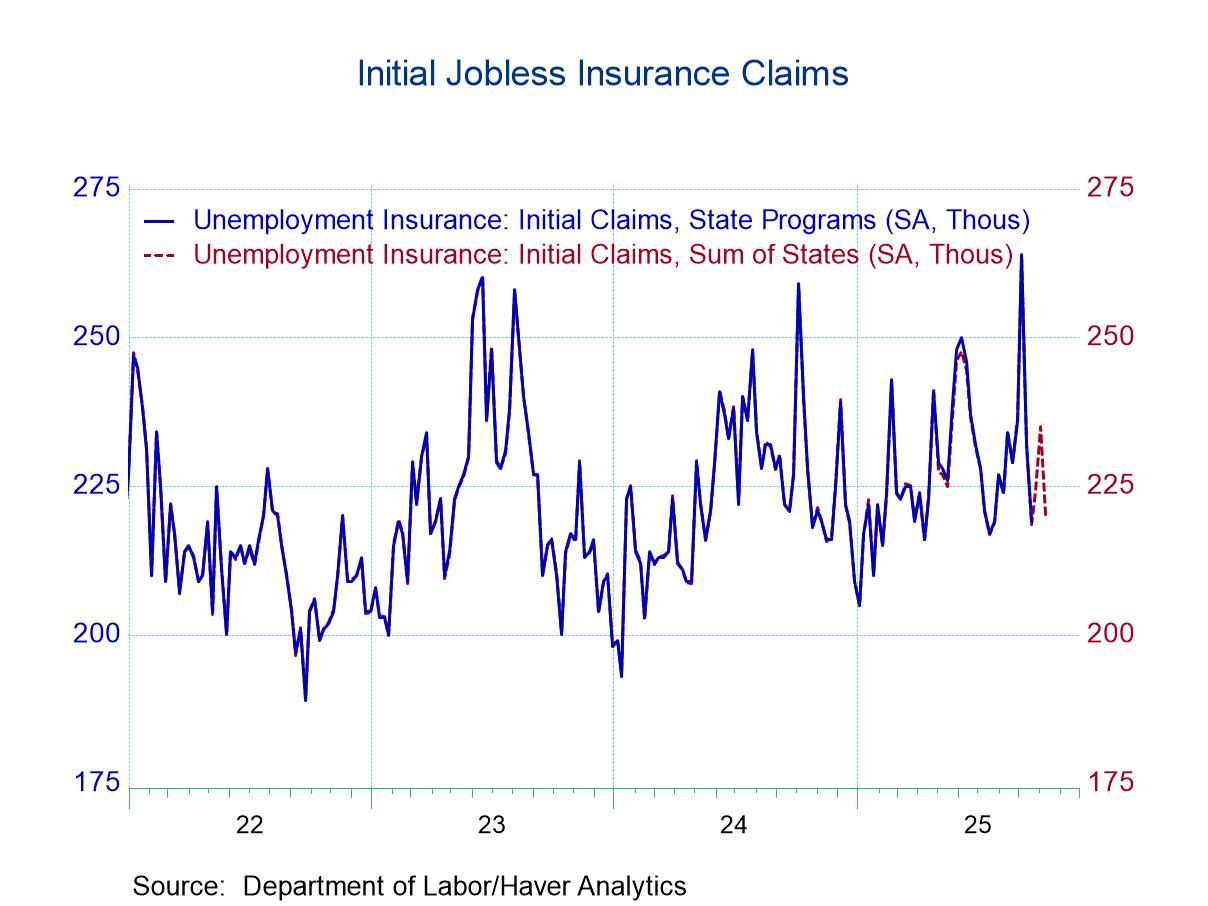U.S. Durable Goods Orders Were Essentially Unchanged in December
by:Sandy Batten
|in:Economy in Brief
Summary
- Weakness concentrated in transportation and defense.
- Excluding transportation and defense, orders rose a solid 1.3% m/m.
- Core capital goods orders posted 0.3% m/m gain while core shipments edged up.


New orders for durable goods were essentially unchanged in December (+4.8% y/y) following a slightly upwardly revised 5.5% monthly gain in November (previously 5.4% m/m). The Action Economics Forecast Survey had expected a 1.5% m/m rise in December. The anemic December figure was due entirely to declines in transportation (-0.9% m/m) and defense (-8.7% m/m). Excluding those two categories, orders rose 1.3% m/m.
The monthly decline in transportation orders was due mostly to a 2.9% m/m decline in orders for defense aircraft. Orders for nondefense aircraft were essentially unchanged and orders for motor vehicles were up 0.4% m/m. Orders for all defense goods slumped 8.7% m/m in December, their third monthly decline in the past four months.
Apart from transportation and defense, other orders posted gains in December. Orders for primary metals advanced 1.4% m/m on top of a 0.9% m/m gain in November. Fabricated metal products orders increased 0.9% m/m after having been unchanged in November. Machinery orders edged up 0.2% m/m in December versus unchanged in November. Orders for computers and electronic products rose 0.4% m/m, the same increase as in November. Orders for electrical equipment and appliances rose 1.8% following a 1.9% monthly increase in November.
Core capital goods orders (that is, nondefense capital goods orders excluding aircraft) increased 0.3% m/m (1.8% y/y) in December following an upwardly revised 1.0% m/m gain in November (previously +0.8% m/m). Core capital goods shipments edged up 0.1% m/m (+1.5% y/y) in December after having declined in each of the previous three months. Core capital goods shipments are a rather reliable coincident indicator of business spending on capital goods in the national accounts.
Shipments of all manufactured goods were unchanged in December (+0.6% y/y) following a 0.5% monthly gain in November. Shipments of durable goods fell 0.3% m/m, their third monthly decline in the past four months. Shipments excluding transportation edged down 0.1% m/m in December while shipments excluding defense goods fell 0.2% m/m. Shipments of fabricated metal products and of electrical equipment and appliances each rose 0.4% m/m in December while machinery shipments fell 0.8% m/m. Shipments of nondurable goods increased 0.4% m/m in December after having been unchanged in November.
Unfilled orders for durable goods increased 1.3% m/m (+9.5% y/y) in December, the same monthly gain as in November. Excluding transportation, unfilled orders were up 0.2% m/m in December. Manufacturing inventories rose 0.2% m/m in December, their first monthly gain in three months. Inventories of durable goods increased 0.4% while inventories of nondurable goods fell 0.2% m/m, their third consecutive monthly decline.
Manufacturers’ orders and shipments of durable goods, as well as nondurable goods, are compiled by the U.S. Census Bureau; they are available in Haver’s USECON database. Unfilled orders and inventories are also included. The Action Economics forecast data are in the AS1REPNA database.


Sandy Batten
AuthorMore in Author Profile »Sandy Batten has more than 30 years of experience analyzing industrial economies and financial markets and a wide range of experience across the financial services sector, government, and academia. Before joining Haver Analytics, Sandy was a Vice President and Senior Economist at Citibank; Senior Credit Market Analyst at CDC Investment Management, Managing Director at Bear Stearns, and Executive Director at JPMorgan. In 2008, Sandy was named the most accurate US forecaster by the National Association for Business Economics. He is a member of the New York Forecasters Club, NABE, and the American Economic Association. Prior to his time in the financial services sector, Sandy was a Research Officer at the Federal Reserve Bank of St. Louis, Senior Staff Economist on the President’s Council of Economic Advisors, Deputy Assistant Secretary for Economic Policy at the US Treasury, and Economist at the International Monetary Fund. Sandy has taught economics at St. Louis University, Denison University, and Muskingun College. He has published numerous peer-reviewed articles in a wide range of academic publications. He has a B.A. in economics from the University of Richmond and a M.A. and Ph.D. in economics from The Ohio State University.




 Asia
Asia

